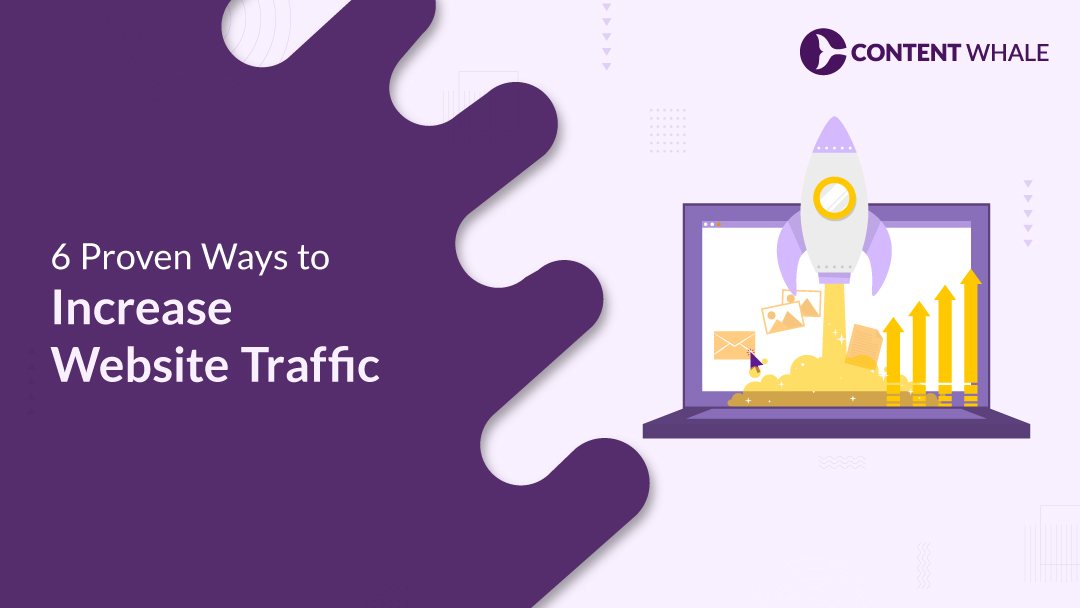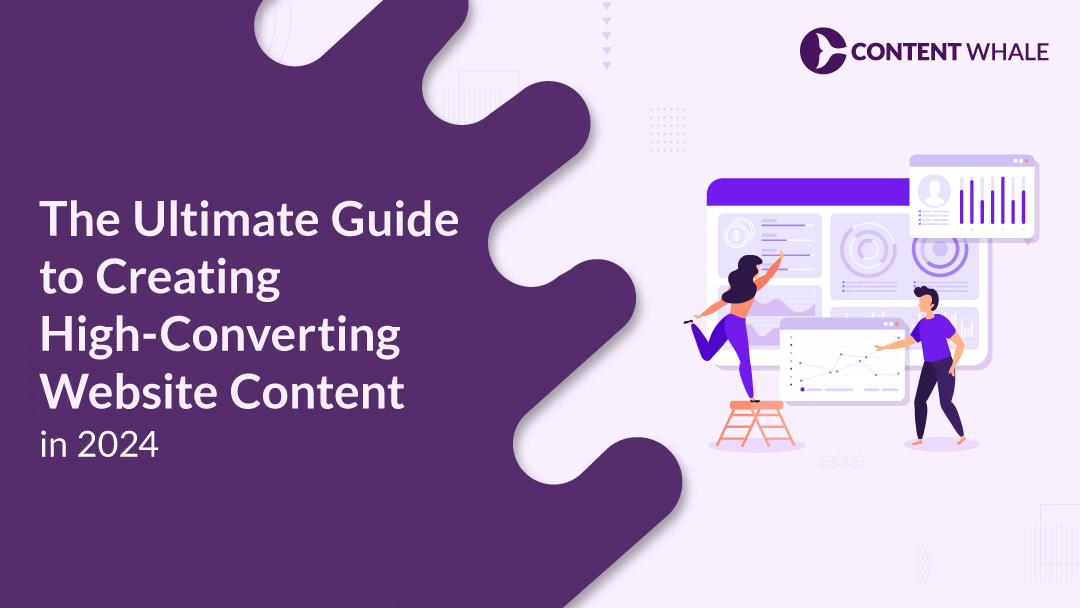Quick Summary
Learn 6 effective strategies to boost website traffic. Improve your online presence with proven SEO tips, social media strategies, high-quality content, email marketing, and guest blogging. Discover how leveraging these methods can enhance your traffic generation and drive more web visitors to your site. Implement these actionable techniques to achieve a significant traffic boost and strengthen your digital marketing efforts.
Achieving online success heavily relies on website traffic. In 2024, this has become more evident with statistics showing that 93% of web experiences begin with a search engine, making it a crucial factor for attracting web visitors and improving your online presence.
Many website owners face challenges in attracting consistent, high-quality traffic. For instance, over 68% of online experiences begin with a search engine, and almost 53.3% of a website’s traffic comes from organic search. This highlights the importance of leveraging SEO tips and search engine optimization strategies to stay ahead in the competitive digital landscape.
This article shares practical and actionable strategies for increasing website traffic. Implementing effective digital marketing tactics, focusing on website optimization, and employing inbound marketing strategies can achieve a significant traffic boost.
These methods include optimizing for search engines, utilizing social media, creating high-quality content, and more. Let’s dive into these strategies to help you enhance your online presence and attract more web visitors.
1. Optimize for Search Engines

Optimizing your website for search engines is one of the most effective ways to drive organic traffic. By focusing on search engine optimization (SEO), you can significantly boost your website traffic and improve your site’s visibility in search results.
SEO tips are essential for ensuring that your website appears higher in search engine results pages (SERPs). Higher rankings lead to more web visitors, as most users tend to click on the top results. Studies show that the first five organic results account for 67.6% of all clicks.
1. Key SEO Practices
I) Keyword Research
Understanding what your target audience is searching for is the foundation of SEO. Tools like Google Keyword Planner, Ahrefs, and SEMrush can help you identify relevant keywords that have high search volumes and low competition. Incorporate these keywords naturally into your content to improve your rankings.
II) On-Page Optimization
On-page optimization involves making sure your website content is easily understandable by search engines. This includes optimizing meta tags, headers, and URLs with relevant keywords. Also, ensure that your content is high-quality and provides value to your audience, as this can lead to higher engagement and lower bounce rates.
III) Technical SEO
Technical SEO ensures that search engines can crawl and index your website efficiently. Important aspects include:
- Website Speed: Fast-loading websites are favored by search engines and provide a better user experience. Google’s PageSpeed Insights can help you identify and fix speed issues.
- Mobile-Friendliness: With over 50% of web traffic coming from mobile devices, having a mobile-friendly website is crucial. Use responsive design to ensure your site looks good on all devices.
- Structured Data: Implementing structured data helps search engines understand your content better and can lead to rich snippets in search results.
2. Tools and Techniques
Several tools can assist in implementing effective SEO strategies:
- Google Search Console: Provides insights into how your site performs in Google Search and helps identify issues.
- Ahrefs: Offers comprehensive data on backlinks, keyword rankings, and content performance.
- SEMrush: Useful for keyword research, competitor analysis, and site audits.
3. Examples of Successful SEO Implementation
Many websites have successfully increased their online traffic by implementing effective SEO strategies. Here are three notable examples:
I) Canva
Canva has built a massive content marketing empire that has significantly boosted its website traffic. By focusing on understanding the intent of searchers, Canva developed a scalable structure for landing pages, targeting various use cases and long-tail keywords.
This approach, coupled with a robust backlink outreach strategy, has helped Canva achieve impressive rankings on search engine results pages (SERPs). Their emphasis on high-quality, optimized content has led to substantial growth in their online visibility and engagement.
II) KrispCall
KrispCall, a SaaS communication product provider, leveraged programmatic SEO to create landing pages for every area code in the United States and several international ones.
This strategy significantly boosted their website traffic, with these pages generating 82% of their U.S. traffic during the analysis month. By addressing audience needs and optimizing for search intent, KrispCall saw a dramatic increase in traffic, highlighting the effectiveness of tailored, location-specific SEO strategies.
2. Leverage Social Media

Using social media effectively can significantly increase your website traffic. Social media platforms are powerful tools for engaging with your audience and driving online traffic to your site. Here’s how you can leverage social media for a traffic boost.
Social media is a key component of any digital marketing strategy. It helps in building brand awareness, fostering relationships with your audience, and directing web visitors to your website. With billions of users on platforms like Facebook, Instagram, Twitter, and LinkedIn, the potential to increase website traffic is immense.
1. Strategies for Promoting Content on Social Media
I) Create Engaging Content
Content is king on social media. To attract and engage your audience, create high-quality, shareable content. This can include blog posts, videos, infographics, and more. Make sure your content is relevant and valuable to your audience, addressing their needs and interests.
II) Use Visuals
Visual content is more likely to be shared and engaged with. Incorporate eye-catching images, videos, and graphics to make your posts stand out. According to studies, posts with images produce 650% higher engagement than text-only posts.
III) Optimize Your Profiles
Ensure that your social media profiles are complete and optimized. Use keywords in your bio and include links to your website. This not only improves your visibility but also makes it easy for users to find and visit your site.
2. Tips for Engaging with Your Audience
I) Be Active and Consistent
Consistency is key to maintaining a strong social media presence. Post regularly and at optimal times to reach your audience when they are most active. Use tools like Hootsuite or Buffer to schedule posts and maintain a consistent posting schedule.
II) Interact with Followers
Engagement goes both ways. Respond to comments, messages, and mentions to build a community around your brand. Engaging with your audience fosters loyalty and encourages more visits to your website.
III) Utilize Hashtags
Hashtags can significantly extend the reach of your posts. Use relevant and trending hashtags to get your content in front of a larger audience. This increases the chances of attracting new followers and web visitors.
3. Successful Social Media Campaigns
Real-life examples highlight the power of social media in driving website traffic:
I) Spotify Wrapped: Spotify’s annual Wrapped campaign provides users with personalized summaries of their listening habits. This highly shareable content encourages users to post their Wrapped results on social media, driving massive engagement and visibility for Spotify. The campaign’s success lies in its personalization and the ease with which users can share their summaries.
II) Patagonia’s Mission-Led Content: Patagonia focuses on raising awareness about environmental issues rather than directly promoting its products. Its campaigns, such as posts supporting environmental causes or showcasing short films on relevant topics, engage its audience on a deeper level and align with its brand values. This strategy builds a loyal community and drives organic traffic to its website.
III) Starbucks Seasonal Campaigns: Starbucks leverages the appeal of seasonal offerings, such as the Pumpkin Spice Latte, by creating themed social media content that drives excitement and urgency. By incorporating user-generated content and focusing on relatable themes, Starbucks successfully engages their audience and encourages them to visit their stores and website.
Leveraging social media effectively can boost your website’s traffic significantly. By creating engaging content, optimizing your profiles, and actively interacting with your audience, you can drive more web visitors and improve your traffic generation efforts.
Social media is a crucial part of digital marketing and inbound marketing strategies, helping to increase your website traffic and online presence.
3. Create High-Quality Content
Creating high-quality content is fundamental to driving website traffic. Engaging and valuable content not only attracts web visitors but also encourages them to return and share your content, leading to a traffic boost.
High-quality content is essential for traffic generation. It enhances search engine optimization (SEO), keeps visitors on your site longer, and encourages social sharing. Quality content also helps establish authority in your niche, which can lead to increased organic traffic.
1. Types of Content that Drive Traffic
Different types of content can effectively increase website traffic:
I) Blog Posts
Blog posts are a staple of content marketing. They provide detailed information on topics relevant to your audience. Incorporate SEO tips such as keyword optimization and internal linking to improve your blog’s visibility on search engines.
II) Videos
Videos are highly engaging and shareable. Platforms like YouTube and social media can drive significant online traffic to your website. Ensure your videos are informative and entertaining and include a call to action directing viewers to your site.
III) Infographics
Infographics present complex information visually. They are easily shareable and can attract many web visitors. Create relevant infographics for your audience and embed them in your blog posts for additional value.
2. Tips for Creating Engaging and Shareable Content
I) Know Your Audience
Understanding your audience is key to creating content that resonates. Use tools like Google Analytics and social media insights to gather information about your audience’s preferences and behaviors.
II) Focus on Quality Over Quantity
It’s better to produce fewer high-quality pieces than to churn out low-quality content. High-quality content is more likely to be shared and linked to, enhancing your website optimization efforts.
III) Use Keywords Effectively
Incorporate relevant keywords naturally into your content. This helps in improving your search engine optimization and making your content discoverable. Tools like Ahrefs and SEMrush can assist in keyword research.
IV) Include Visuals
Visual content like images, videos, and infographics can make your content more engaging. They break up text and provide additional ways for your audience to interact with it.
3. Successful Examples of Content Marketing
I) HubSpot’s Blog: HubSpot’s blog is a prime example of how consistent, high-quality content can drive significant website traffic. Their blog posts are well-researched, informative, and optimized for search engines, making them a valuable resource for marketers and businesses.
II) Moz’s Whiteboard Friday: Moz’s Whiteboard Friday series offers in-depth SEO tips and insights through video content. This series has become a go-to resource for marketers looking to improve their search engine optimization strategies.
III) BuzzFeed’s Listicles and Quizzes: BuzzFeed leverages engaging and shareable content like listicles and quizzes to drive massive online traffic. Their content is tailored to their audience’s interests, making it highly engaging and shareable.
Creating high-quality content is a cornerstone of inbound marketing. By understanding your audience, focusing on quality, and utilizing various content types, you can significantly increase website traffic. High-quality content not only attracts more web visitors but also enhances your overall digital marketing strategy.
4. Utilize Email Marketing

Email marketing remains one of the most effective strategies to drive website traffic. By crafting compelling email campaigns, you can engage your audience, encourage repeat visits, and boost your overall traffic generation.
Email marketing is a powerful tool in your digital marketing arsenal. It allows you to communicate directly with your audience, providing a personalized touch that can lead to higher engagement rates. Effective email campaigns can significantly increase website traffic by bringing web visitors back to your site regularly.
1. Strategies for Building and Segmenting Your Email List
Grow Your Email List
To maximize the impact of your email marketing, focus on building a substantial email list. Here are some tips:
- Offer Incentives: Provide value in exchange for email sign-ups, such as free eBooks, discount codes, or exclusive content.
- Use Pop-Ups: Implement exit-intent pop-ups on your website to capture visitors before they leave. Ensure the pop-up offers something valuable to encourage sign-ups.
- Leverage Social Media: Promote your email newsletter on social media platforms to reach a broader audience.
Segment Your Audience
Segmenting your email list allows you to send targeted messages to different groups within your audience. This improves the relevance of your emails and increases engagement. You can segment based on various criteria, such as:
- Demographics: Age, gender, location.
- Behavior: Purchase history, browsing behavior.
- Preferences: Interests, preferred content types.
2. Tips for Crafting Compelling Email Campaigns
Personalize Your Emails
Personalization goes beyond using the recipient’s name. Tailor the content based on their preferences and behavior. Personalized emails have higher open and click-through rates, leading to a traffic boost for your website.
Create Engaging Subject Lines
The subject line is the first thing your audience sees. Make it catchy and relevant to encourage recipients to open the email. Use action words and create a sense of urgency or curiosity.
Provide Value
Ensure your emails provide valuable content to your audience. This could be educational articles, exclusive offers, or updates about new products. High-value content keeps your subscribers engaged and encourages them to visit your website.
Include Clear Call-to-Actions (CTAs)
Every email should have a clear and compelling CTA that directs the recipient to your website. Whether the recipient wants to read a blog post, check out a new product, or take advantage of a special offer, the CTA should be prominent and easy to follow.
3. Examples of Effective Email Marketing Campaigns
I) BuzzFeed’s Newsletters: BuzzFeed sends out daily newsletters with curated content that appeals to different segments of their audience. Their engaging subject lines and high-value content keep subscribers coming back, driving significant online traffic to their site.
II) Shopify’s Welcome Series: Shopify’s welcome email series for new subscribers provides valuable resources and tips for setting up an online store. This not only helps new users but also directs them to Shopify’s blog and resources, increasing website traffic.
III) Amazon’s Personalized Recommendations: Amazon’s emails include personalized product recommendations based on browsing and purchase history. This level of personalization drives organic traffic back to their site, as users are enticed to explore products they are likely interested in.
Utilizing email marketing effectively can boost your website’s traffic significantly. By building and segmenting your email list, crafting personalized and engaging emails, and providing clear CTAs, you can drive more web visitors and enhance your traffic generation efforts.
Email marketing is an essential part of inbound marketing and website optimization strategies. It can help increase website traffic and strengthen an online presence.
5. Engage in Guest Blogging
Guest blogging is a highly effective strategy for boosting website traffic. By writing posts for other websites, you can reach new audiences, build your authority, and drive online traffic back to your site.
1. Benefits of Guest Blogging
Guest blogging offers multiple benefits for traffic generation and inbound marketing:
I) Increased Exposure: Publishing on popular blogs in your niche exposes your content to a broader audience, helping to attract more web visitors to your site.
II) Backlinks: Guest posts often include links back to your website. These backlinks are valuable for search engine optimization, signaling to search engines that your site is a credible source.
III) Authority Building: Contributing high-quality content to reputable sites establishes you as an authority in your field, increasing trust among potential visitors.
2. Finding Guest Blogging Opportunities
To maximize the impact of guest blogging, target reputable blogs within your industry. Here are some tips:
I) Research Blogs in Your Niche: Use tools like Google, Ahrefs, and SEMrush to find blogs that accept guest posts. Look for sites with high domain authority and engaged audiences.
II) Pitch Relevant Topics: Ensure your proposed topics are relevant to the blog’s audience. Provide a brief outline to show the value your post will offer.
III) Network with Bloggers: Engage with bloggers and editors on social media and comment on their posts. Building relationships increases your chances of securing guest blogging opportunities.
3. Tips for Writing Guest Posts
Creating high-quality guest posts is key to driving organic traffic to your site:
I) Provide Value: Focus on delivering valuable insights and actionable tips that resonate with the blog’s audience. High-quality content encourages readers to visit your website for more information.
II) Incorporate Keywords: Use relevant keywords naturally throughout your post to improve its visibility in search engines. This includes the primary keyword website traffic and secondary keywords like SEO tips and digital marketing.
III) Include a Strong Bio: Your author bio should include a brief introduction, your expertise, and a link to your website. This link is essential for driving web visitors back to your site.
4. Examples of Successful Guest Blogging Campaigns
I) Neil Patel: Neil Patel, a renowned digital marketer, has written numerous guest posts on high-traffic blogs. His posts often include detailed SEO tips and strategies, driving substantial website traffic to his own site.
II) Brian Dean: Brian Dean of Backlinko has leveraged guest blogging to build his authority in search engine optimization. His comprehensive and valuable content on other sites has led to significant traffic generation for Backlinko.
Engaging in guest blogging can significantly boost your website’s traffic. By targeting the right blogs, delivering valuable content, and incorporating strategic keywords, you can attract new web visitors and enhance your website optimization efforts.
Guest blogging is a vital component of digital and inbound marketing. It can help you increase your website traffic and establish your online presence.
6. Leverage Influencer Marketing

1. Influencer Marketing’s Role
Influencer marketing is a powerful strategy for driving website traffic. By partnering with influencers who have a substantial and engaged following, you can reach new audiences and generate significant online traffic.
Influencers can promote your products or services through authentic content that resonates with their audience, leading to increased web visitors and potential conversions. This form of marketing leverages the trust and authority that influencers have built with their followers, providing a direct and effective way to enhance your digital marketing efforts.
2. Finding the Right Influencers
Selecting the right influencers is crucial for a successful campaign. Here are some tips for finding influencers that align with your brand values and target audience:
I) Relevance: Ensure the influencer’s content aligns with your brand and appeals to your target audience. Look for influencers who share similar values and have a following that matches your customer demographics.
II) Engagement: Analyze the influencer’s engagement rates. High engagement indicates that their followers are active and interested in their content, which can lead to better campaign results.
III) Authenticity: Choose influencers who create genuine and authentic content. Authentic endorsements are more likely to resonate with their audience and drive organic traffic to your website.
IV) Reach: Consider the influencer’s reach, but don’t solely focus on the number of followers. Micro-influencers with smaller but highly engaged audiences can be more effective than macro-influencers with large, less engaged followings.
3. Creating Effective Campaigns
Collaborating with influencers requires a strategic approach to ensure the success of your campaigns. Here are some strategies:
I) Clear Objectives: Define clear goals for your influencer marketing campaign. Whether it’s to increase website traffic, boost sales, or enhance brand awareness, having specific objectives will guide your campaign.
II) Content Collaboration: Work with influencers to create content that aligns with both your brand and their style. This can include blog posts, social media takeovers, product reviews, or unboxing videos.
III) Incentives: Offer incentives for influencers and their followers. This could be exclusive discounts, giveaways, or contests that encourage followers to visit your website.
IV) Track Performance: Use tracking links and unique promo codes to measure the impact of your campaign. Monitor metrics such as website visits, engagement rates, and conversions to evaluate the campaign’s success.
4. Success Stories
Many brands have successfully used influencer marketing to drive website traffic. For example:
I) Daniel Wellington: This watch brand grew exponentially by partnering with Instagram influencers. They provided influencers with free watches and unique discount codes, resulting in a massive increase in web visitors and sales.
II) Glossier: Glossier leveraged beauty influencers to build a loyal customer base. Their collaborations involved influencers sharing personal experiences with Glossier products, driving significant organic traffic to their website and boosting sales.
By effectively leveraging influencer marketing, you can achieve a significant traffic boost and enhance your inbound marketing strategy, ultimately driving more web visitors and increasing your website traffic.
Conclusion

Implementing strategies like optimizing for search engines, leveraging social media, creating high-quality content, utilizing email marketing, and engaging in guest blogging can significantly increase your website traffic. Each approach contributes to a comprehensive digital marketing plan that attracts more web visitors and enhances your traffic generation efforts.
Consistent application of these methods will result in a noticeable traffic boost, improve your website optimization, and grow your audience effectively. Stay updated with the latest SEO tips and trends to continuously refine your tactics for sustained success in driving online traffic. With dedication and the right strategies, achieving a robust online presence and increased organic traffic is within reach.
FAQs
What are the most effective SEO practices to increase website traffic?
Effective SEO tips include thorough keyword research, optimizing on-page elements, and focusing on technical SEO. Use keywords naturally in titles, headers, and meta descriptions, and improve site speed, mobile-friendliness, and structured data for better search engine indexing.
How can I use social media to drive more traffic to my website?
Create engaging, shareable content tailored to each social media platform. Use visuals like images and videos, engage with your audience, utilize hashtags, and collaborate with influencers. Running targeted ad campaigns can also provide a significant traffic boost.
What types of content are most effective for boosting website traffic?
High-quality blog posts, engaging videos, and shareable infographics are highly effective. Case studies and whitepapers establish authority and attract professional audiences. Consistently producing diverse content types keeps your audience engaged and drives traffic generation.
How can email marketing help in increasing website visitors?
Email marketing drives website traffic by sending personalized, relevant content to segmented lists. Craft compelling subject lines, include clear calls-to-action, and provide exclusive content or offers. Regularly analyze campaign performance to optimize future emails for better results.
What are the benefits of guest blogging for website traffic?
Guest blogging boosts website traffic by reaching new audiences on reputable blogs. It provides valuable backlinks for search engine optimization and builds authority and trust. Sharing expertise on other platforms attracts web visitors and drives organic traffic to your site.





